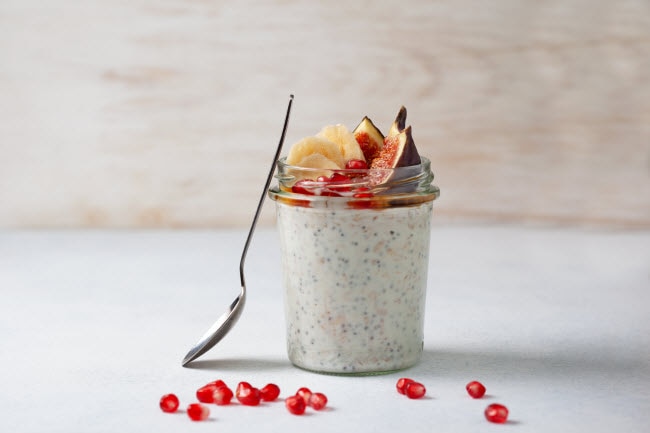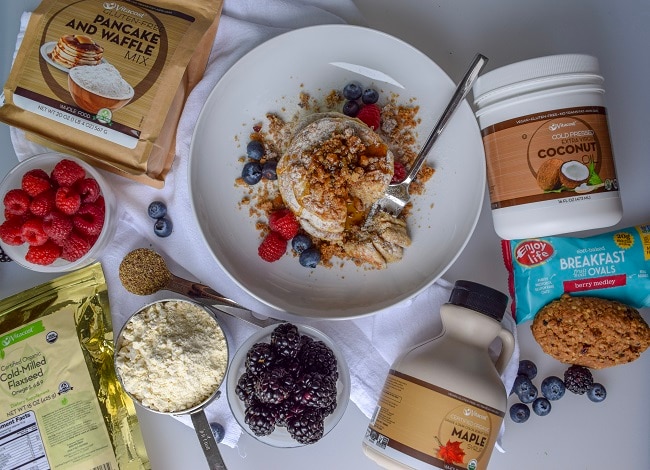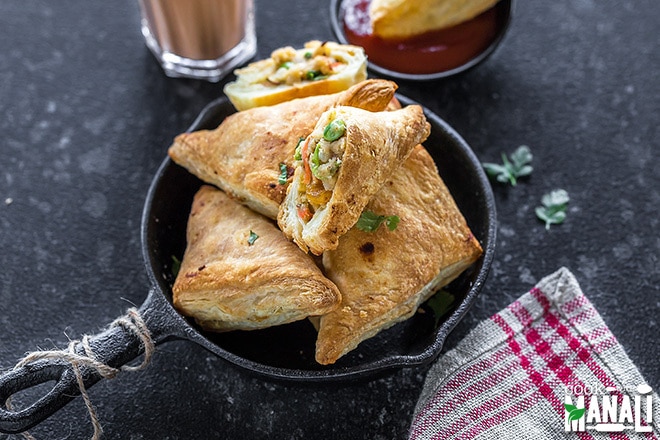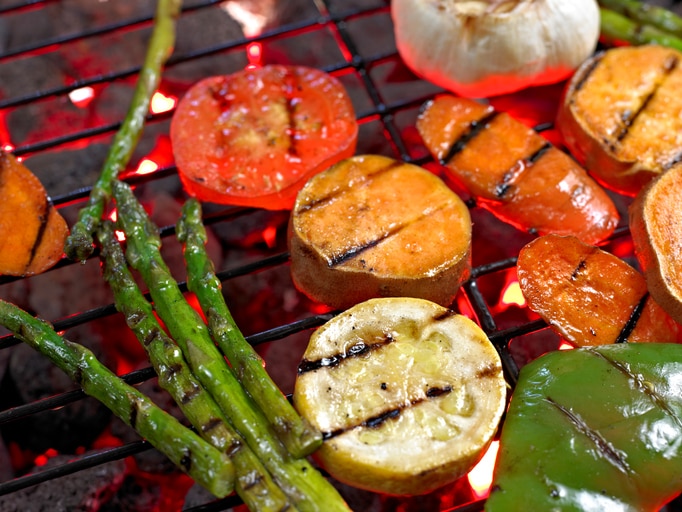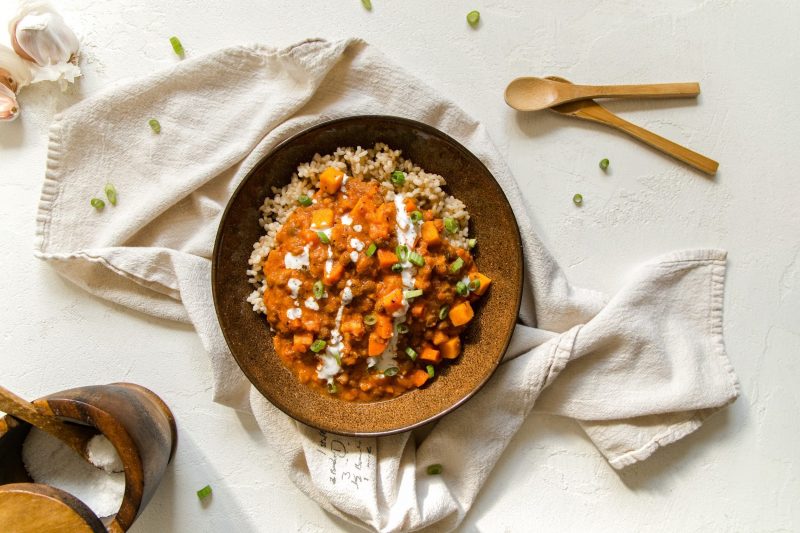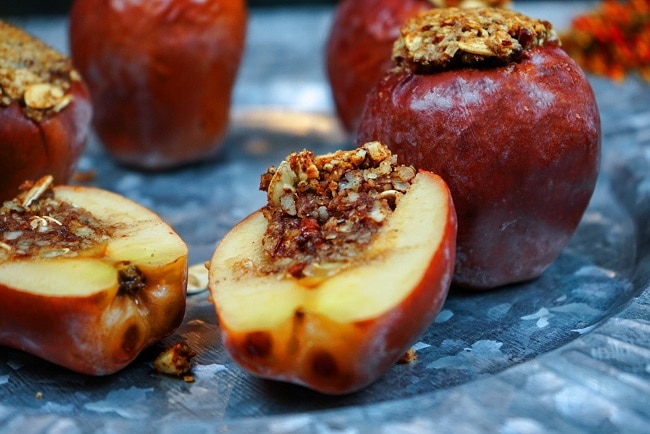My family and I have dreams of turning our recently purchased old-school van into a camper. Since we brought it home, it’s pretty much all we can talk about. Turns out, after chatting with a few friends, we’re not the only ones yearning for an outdoor adventure.
Hitting the open road for the great outdoors is an ideal escape right now. Not only will camping get you out of the house and into all of the holistic benefits of nature, but it’s also the epitome of social distancing.
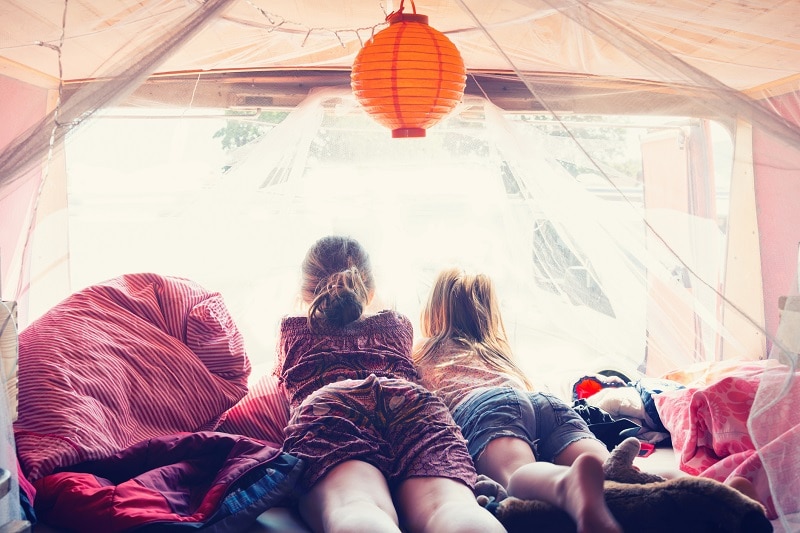 If your family is anything like ours, you’ve already got your first camping trip of the season planned out. The key to a successful trip is knowing what and how to pack – especially when it comes to food!
If your family is anything like ours, you’ve already got your first camping trip of the season planned out. The key to a successful trip is knowing what and how to pack – especially when it comes to food!
From impulse gas station snacks to cheap hot dogs and pre-packaged processed foods, it’s far too easy to fall into bad habits when you’re camping. Instead, follow this step-by-step guide, which includes healthy recipes, for you and your family to make and take on the road!
Meal prep
Pre-prepped foods make eating healthfully on the road a lot easier (and cheaper). With just a smidgen of effort, you can make your great escape even better with healthy and delicious family-friendly recipes.
Step 1: Make a meal plan
Camp food is part of the camp experience. Instead of trying to match your at-home family meal prep routine, try preparing meals in advance that lean into the camping experience. Remember to allow for some treats as well!
- Make healthy foods easy to eat: The night before your trip, wash and chop a plethora of fruits and veggies. Store them in containers for easy on-the-go access.
- Snack smarter: There’s something about a long ride in the car that often give us the munchies! Pack lots of healthy snacks nearby, such as seaweed snacks, dried apples, kale chips and trail mix. Remember to pack the easiest fast food of all: fruit! Fruits like apples, oranges and bananas are both easy to transport and to eat!
- Better-for-you convenience foods: After a long day of driving or hiking, you’re probably unlikely to put on your chef’s hat. Pack a few just-in-case staples, such as Annie’s Homegrown Mac & Cheese – and instant, better-for-you packaged item made with organic pasta.
Step 2: Prep meals ahead of time
Getting ready for a camping expedition can indeed be stressful. Before my family heads out, we typically experience a 5-minute because and we inevitably forgot something. To make the process smoother, we’ve learned to prepare our food the night before we leave.
This way, when we depart, we simply transfer the food from the fridge to the van.
Step 3: Pack food according to when you’ll eat it
This step is all about organization. Food storage containers will become your best friends when it comes to camping.
Two medium plastic storage containers typically do the trick. Use one to stack dry and canned foods. Use the other to store cooking and kitchen gear (stove, cast iron pan, utensils).
Finally, pack all refrigerated foods in a cooler. Cover foods that should be kept close-to-frozen with ice. For foods that need to be kept cold, but not frozen (such as fruit, milk and condiments that contain dairy) consider placing these items on top of the ice.
Step 4: Store food wisely
If you’re in a hard-sided RV or trailer, food storage should be simple (keep it inside!).
On the other hand, if you’re in a tent, prepare to keep tempting, yummy-smelling groceries and empty food wrappers/containers inside your vehicle, or in a place that won’t draw in wildlife.
Trekking out beyond the roads? Experts recommend hanging all foodstuffs and toiletries in a tree or storing them in a wildlife locker when available.
Recipes
Breakfast
Prepare this simple breakfast in a jar, put it in the cooler and go!
Whether you avoid gluten or have a family member with a dairy allergy, you can surely find a pancake mix that suits your diet. These mixes are easy to transport and simple to cook up on the fly!
Gluten-Free Toasted Hemp Muffins
Besides their delicious, nutty taste, these hemp seed-studded muffins are packed with protein, fiber, vitamins and minerals. Bake them at home and for a nutritious breakfast treat.
Lunch
Sure you could make a sandwich on whole-grain bread, but we prefer a fresh batch of grab-and-go samosas. Enjoy them cold or slightly warmed over a camping stove.
After a night of indulging in s’mores on day one, a salad can be really light and fulfilling for the following dinner. Prepare them in advance and pack them in single-serve jars.
Try Roasted Sweet Potato & Kale Salad with Honey-Lemon Tahini Dressing and store the dressing on the side. Or, make a Raw Chili-Mint Zucchini Salad, which uses the dressing as a marinade. To craft your own, check out these 5 Tips for Building Balanced & Satiating Salads.
Dinner
Chop your favorite veggies in advance and coat with olive oil, herbs and a dash of salt. Wrap it all up in aluminum foil. Once the campfire is roaring, toss it on the grill, or in the coals, for about a half hour. Shake and turn the veggies with tongs every ten or so minutes
For another take on this dish, stick the veggies onto skewers and cook over open flames.
These dishes are always better the next day, anyway! Prepare any of these one-pot meals the night before. Heat it up over an open fire with a cast iron pan or the microwave inside your RV).
Dessert
Streusel-Stuffed Baked Apples (Paleo & Vegan)
Core and wrap the apples in aluminum foil beforehand. The, all you need to do is throw them on the fire and wait until the apple is nice and soft. These make a great breakfast option too.
Snacks
Salty or sweet (or a combo of the two!), take your pick and prepare some DIY trail mix for a hearty, healthy snack. Strapped for time? Look for better-for-you, store-bought varieties instead.

